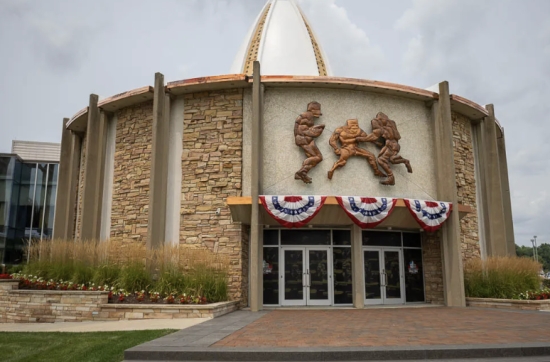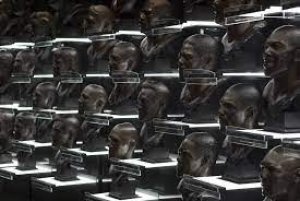Many athletes shine during their prime. Their on-field feats draw crowds and media attention. Yet, not everyone enters the hall of fame on the first ballot. Some must wait. In that waiting period, personal branding often becomes a hidden factor. By building a strong image after retirement, they remain visible and influential. This can lead to reconsideration and, in some cases, eventual induction into senior or historical categories.
A survey from 2020 showed that 34% of fans name “off-field legacy” as an important part of judging an athlete’s overall greatness. That statistic hints at why personal branding matters, even years after the final game. It shapes how the public, media, and even hall-of-fame voters view the individual’s total career.
Why Personal Branding Matters After Retirement
Retirement sometimes causes athletes to fade from public view. The daily highlights vanish. People focus on younger stars. But some ex-players remain active in the spotlight. They run charities. They mentor youth. They appear on TV as analysts or ambassadors. This sustained presence keeps them relevant. It also builds goodwill among fans and voters who decide hall-of-fame honors.
Example: Coaching and Broadcasting Roles
Several hall-of-fame members first made their mark as players. Later, they coached or commentated. That second career gave them new audiences to impress. One well-known baseball figure said, “I gained more respect for my playing style once people heard me explain the game on broadcasts.” This exposure can tilt opinions. It reminds watchers of their depth of knowledge and past achievements.
Earning the Trust of the Public and Media
Media can influence how the public views older athletes. Positive coverage boosts reputations. Negative stories can stain them. Once the playing days end, controlling the narrative becomes crucial. Some retired players hire firms to manage interviews or social posts. They may also join a negative review removal service if controversy arises. They want a consistent, respectable image that resonates with fans and hall-of-fame voters.
Social Media Connections
Social channels let retired pros speak directly to fans. They share training tips, personal thoughts, or memories of legendary games. This opens a window into their personality. Fans might see them in a friendlier light. That good will can help push borderline candidates over the line for hall-of-fame consideration. Hall-of-fame committees notice broad public support.
Building a Community Presence
Local involvement can cement a legacy. An ex-football linebacker might host free clinics for kids in his hometown. A retired soccer forward might sponsor a local youth league. Reporters pick up these stories, painting a positive picture of community service. One hall-of-fame board member commented, “We look at a candidate’s total impact on the game, on and off the field.” That phrase “on and off the field” sums up how personal branding can shape the final vote.
Charitable Foundations
Some retired athletes start or support foundations. These groups might fund scholarships or disease research. This philanthropy ties back to the athlete’s name. People remember them not just for stats, but also for generosity. One official stated, “A big philanthropic profile reminds us that they have a lasting impact. That resonates when we weigh their contributions to the sport.” Good deeds often linger in voters’ minds.
Owners, Contributors, and Coaches
Not just players benefit from personal branding. Owners, general managers, and coaches can face the same hall-of-fame hurdles. If they left under a cloud or never got recognized, building a strong persona later can reopen doors. They might pen books about leadership. They might appear at conferences. They might mentor younger executives or coaches. Over time, that presence can shift how committees view their overall career.
Example: A Front-Office Legend
Some sports executives remain behind the scenes during their active years. After retirement, they share stories or strategies through interviews or public speaking. This transparency helps fans appreciate their role in winning championships or rebuilding franchises. The momentum can push them toward hall-of-fame induction in the “contributor” category.
Statistics on Senior Inductions
A 2019 study of major sports halls of fame revealed that 15% of new inductees enter through senior or special committees. These committees often focus on overlooked or older candidates. They weigh intangible factors like leadership, influence on the sport’s culture, or post-career achievements. That means personal branding efforts can have real payoff. Public appreciation and favorable media can sway these later votes.
Late-Career Recognition
Voters sometimes revisit borderline candidates decades after retirement. A once-controversial figure might appear more admirable with the passage of time. Positive branding and community contributions can erase old doubts. One example is a coach who missed out early due to off-field issues. Later, a strong reputation as a mentor turned the tide in a senior committee vote.
Actionable Tips for Building a Post-Retirement Brand
- Stay Visible
Appear at charity events, signings, or sports shows. Remind fans and media you exist. - Share Expertise
Contribute to coaching clinics or write columns. Show your deep knowledge of the game. - Engage Online
Use social media to connect. Post stories or advice. Let your personality shine through. - Collaborate
Partner with businesses or nonprofit organizations. Lend your name to causes that matter. - Address Past Controversies
If needed, use professional help to manage your reputation. Aim for a consistent, positive image.
Long-Term Impact of a Strong Brand
A robust personal brand can create benefits beyond hall-of-fame recognition. It can lead to sponsor deals or TV opportunities. It can also enhance your legacy in the eyes of the public. Fans might celebrate your achievements more fully if they see you as a respected figure who stands for the sport’s ideals. One marketing consultant said, “A strong brand doesn’t happen by accident. It’s an ongoing effort to stay relevant.”
Influence on Younger Players
Retired icons with solid brands can mentor current athletes. They share wisdom on balancing performance and image. They might advise them on navigating controversies. This teaching role further cements the older athlete’s standing as a legend. Younger players look up to them, strengthening their post-career legacy.
Conclusion
Personal branding doesn’t end with the final whistle or last pitch. Many retired athletes and sports figures continue building their image. This keeps them front of mind for fans, media, and hall-of-fame voters. Whether through charity, commentary, social media, or coaching, they stay active in shaping how people view their contributions. Eventually, that can tip the scales for an induction vote in a senior or historical category.
If you’re an ex-player, coach, owner, or contributor who feels overshadowed by time, consider these post-retirement branding methods. Improve your public image, connect with the community, and manage old controversies. Over time, those efforts can help rewrite your story. You might find yourself inducted, celebrated, or re-discovered, long after you hung up your uniform. The hall of fame might stand just within reach, waiting for your renewed impact on the sport.







Comments powered by CComment